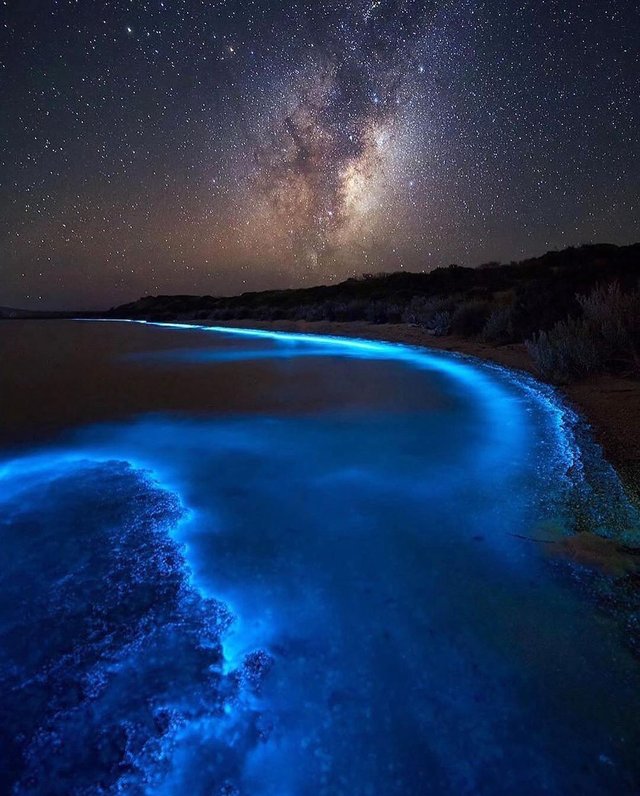THE MYSTERY BEHIND MILKY SEA
Captain Raphael Semmes wrote from his cabin on the CSS Alabama in 1864 about going through the Panama Canal "I was shocked as I moved from the deep blue sea to a patch of bright blue water... The Alabama could have been envisaged as a phantom ship illuminated up by the sickly and unearthly brilliance of a phantom sea with a little stretch of the imagination..."
Gliding across a'milky sea' for hours may have been terrible for seafarers who often believed in sea monsters and mermaids.

Source: Photographed by James Garlick,shot in Tasmania
The milky sea, also known as mareel, is created by billions of trillions of bioluminescent bacteria that reside throughout the water column from the surface to the sea floor.
In the 1800s, mesmerised sailors had no idea what was creating the effect, but they were certain it was something awful. It looked like milk or clouds from horizon to horizon, ploughing through molten lead or sailing across a field of snow, according to them. We now have a better grasp of what happens, but how and why it happens remains a mystery.
Bioluminescence is "the white whale of satellite remote sensing," according to Steven Miller, a senior research scientist at Colorado State University. Earlier sensors couldn't detect it, but Miller's instruments can detect low quantities of light, such as moonlight.
In 1995, a report from the steamer Lima provided him with his most successful satellite view of the milky sea. While cruising off the coast of Somalia, the captain of the Lima noticed a whiteish glow on the horizon, which was followed 15 minutes later by the sea, which appeared to turn into "a field of snow" from horizon to horizon. Miller examined archive satellite imagery of the area to see whether any evidence of the phenomenon could be found; to his surprise, he discovered'smudges,' the first documented sighting of a bioluminescent milky sea. The scale is mind-boggling: a glistening sea expanse the size of Connecticut, or 15,000 square kilometres.
We haven't solved the puzzle of the milky seas... we just need to learn a lot more,” Steven Miller adds. “We were able to detect them, but there is no definite proof of how or why they form... we simply need to learn more about it.” Miller's team is utilising satellites to locate the next milky sea, after which they will collect samples to analyse the phenomenon.
Other magical ocean effects include the red tide off the coast of Florida and algae blooms all over the world's oceans, and there is still so more to learn. Scientists know more about space than they do about the oceans, according to NASA, and even with all of the world's technology, only a daring seafarer could drift across a mist-colored ocean without thinking "here be dragons."
REFERENCES:
https://www.pnas.org/content/102/40/14181 https://science.howstuffworks.com/environmental/earth/oceanography/milky-sea.htmDONT FORGET TO UPVOTE, RESTEEM. FOLLOW FOR MORE SUCH ARTICLES :-)
Nice to read your post.
You have added a correct reference link to your post.
Keep posting and stay with our community.
Thank you